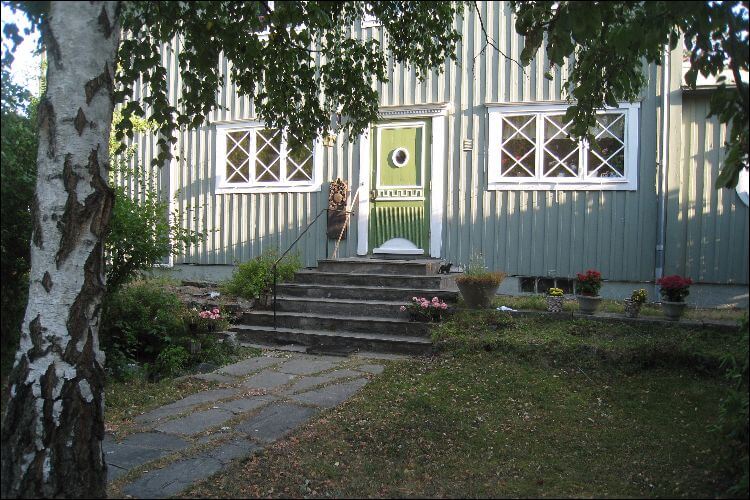Looking to maintain a healthy and fruitful garden? Crop rotation is an essential practice that you should consider, especially after growing potatoes or other nightshade vegetables. These plants are prone to diseases and pests that can quickly drain the soil of vital minerals. To ensure a healthy potato crop in the future, it’s important to avoid planting them in the same area for at least two years.
But what should you plant after potatoes? This guide provides valuable tips on crop rotation, including which plants to grow to replenish the soil and control pests and diseases.
By rotating your crops and planting different types of plants each year, you can help maintain the soil’s health and productivity. This practice can also help prevent pests and diseases from taking hold, ensuring a safer and more secure garden for you and your family.
Whether you’re new to gardening or a seasoned pro, this article will provide you with expert tips on how to maintain a thriving garden year after year. So, sit back, relax, and read on to learn more about what to plant after potatoes!
Quick Takeaways
- Potatoes are a nutrient-hungry crop that deplete soil minerals, making crop rotation essential.
- Onions are a safe root vegetable to follow potatoes if scab is a concern, and certain plants can control pests like wireworms and Colorado potato beetle.
- Legumes like peas or green beans are good to plant after potatoes, as they add nitrogen to the soil.
- Replenishing garden soil with compost and herbs like marigolds and thyme can contribute to a healthy and productive garden.
Are Resistant Varieties of Potatoes Effective in Preventing Blight?
When it comes to combat potato blight, resistant varieties have proven effective in preventing the disease. These combat potato blight resistant varieties offer enhanced protection against the blight-causing pathogen, ensuring healthier potato crops. By planting such varieties, farmers can reduce the need for chemical fungicides and promote sustainable agricultural practices.
Why Rotate Crops?
You should rotate crops to keep your garden healthy and productive for all your plants, especially potatoes. Crop rotation helps prevent diseases and pests that can drain the soil of essential nutrients.
When you plant the same crop in the same spot repeatedly, the soil becomes depleted, making it difficult for plants to grow strong and healthy. By rotating your crops, you give the soil a chance to replenish its nutrients and prevent diseases from taking hold.
This means you’ll have a healthier garden with stronger plants that can resist pests and diseases. Plus, you’ll be able to enjoy more bountiful harvests of your favorite vegetables, including potatoes, year after year.
So, if you want to keep your garden thriving, make sure to rotate your crops regularly.
Best Plants to Follow Potatoes
Consider adding legumes or leafy vegetables to your garden after harvesting potatoes to maintain healthy soil conditions. Legumes, such as peas or green beans, are nitrogen-fixing plants that add nutrients to the soil. This is especially important after growing potatoes, which are known to be nutrient-hungry and can quickly deplete soil minerals.
After planting beans, follow up with a leafy vegetable such as lettuce or cabbage to continue replenishing the soil. These light-feeding crops include parsnips, dill, fenugreek, soybeans, carrots, beets, and onions.
Remember, crop rotation is essential for potatoes and other nightshade vegetables. Avoid planting potatoes in the same area for at least two years to prevent disease and pest issues. By rotating through crops like legumes, leafy vegetables, and fruits, you can maintain a healthy and productive garden for all your plants.
Stick to environmentally-friendly products to control pests and diseases, and always replenish the soil with fresh compost and organic or natural fertilizers. By following these guidelines, you can ensure future healthy potato crops and a thriving garden.
Tips for Maintaining Healthy Soil
To maintain healthy soil, it’s important to replenish it with fresh compost and organic or natural fertilizers. This will help replace the nutrients that were used up by the previous crop, such as potatoes. It’s also important to rotate crops, as planting the same crop in the same spot year after year can lead to soil-borne diseases and pests.
To make sure your soil stays healthy, keep a chart of where each crop was planted each year. This will help you rotate your crops properly and prevent them from depleting the soil of specific nutrients. Additionally, planting companion plants such as herbs and flowers can help replenish the soil and deter pests. Check out the table below for some examples of companion plants and the benefits they provide:
| Companion Plant | Benefits |
|---|---|
| Marigolds | Deters pests, adds nutrients, improves soil structure |
| Mint | Deters pests, adds nutrients |
| Oregano | Deters pests, adds nutrients |
| Calendula | Deters pests, adds nutrients, improves soil structure |
| Nasturtiums | Deters pests, adds nutrients, improves soil structure |
By following these tips and regularly replenishing your soil, you can ensure that your crops grow strong and healthy, and you can enjoy a bountiful harvest year after year.
Frequently Asked Questions
What are some common mistakes that gardeners make when rotating their crops after potatoes?
You may mistakenly plant potatoes in the same area for two years, which depletes soil minerals and invites pests and diseases. Not keeping a chart of plant locations and not replenishing soil are also common errors.
Are there any vegetables that should be avoided planting after potatoes due to the risk of disease or pests?
Avoid planting other nightshade vegetables like tomatoes, eggplants, and peppers after potatoes as they attract similar pests and diseases. Stick to light-feeding crops like parsnips, peas, and onions. Replenish soil with herbs and flowers.
How can you tell if your soil is depleted of nutrients after growing potatoes, and what steps can you take to replenish it?
To tell if your soil is depleted of nutrients after growing potatoes, check for signs like stunted growth or yellowing leaves. Replenish it by adding compost, natural fertilizers, and planting nitrogen-fixing legumes like peas or beans.
Can you rotate crops in a small garden or container garden, or is it only necessary for larger outdoor plots?
Yes, you can rotate crops in a small garden or container garden. It’s important to give your plants a break from the same soil to avoid diseases and pests. Try planting different types of plants each year.
Are there any crops that should be planted before potatoes to help prepare the soil and prevent disease?
Plant legumes or beans before potatoes to help prepare the soil and prevent disease. They add nitrogen to the soil and help break down organic matter. This creates a healthy environment for your potatoes to grow.
Conclusion
Now that you know the importance of crop rotation, you’re ready to choose the best plants to follow your potatoes.
Don’t worry, it’s easier than you think! Consider planting legumes like beans or peas, which can fix nitrogen in the soil.
Leafy greens such as lettuce and spinach are also great options, as they don’t require much nitrogen and can help control pests.
Remember to maintain healthy soil by adding organic matter and avoiding planting the same family of plants in the same area for at least two years.
With these tips, you’ll be able to enjoy a thriving garden year after year. Happy planting!








